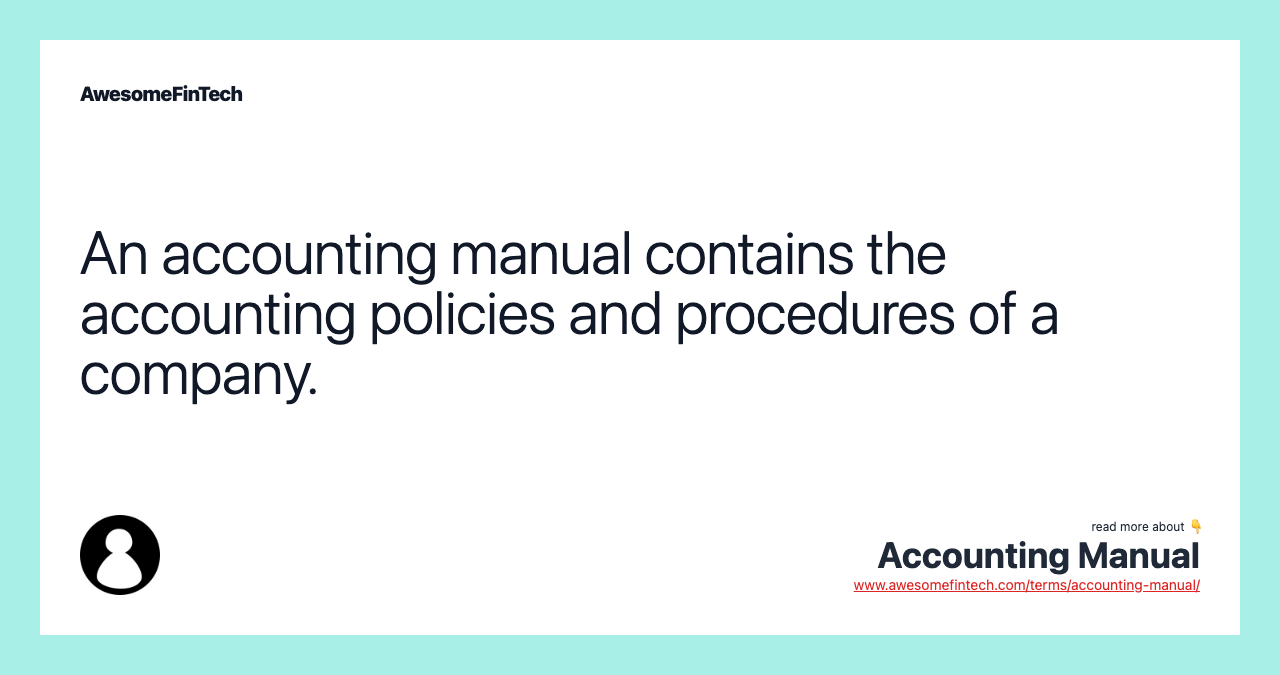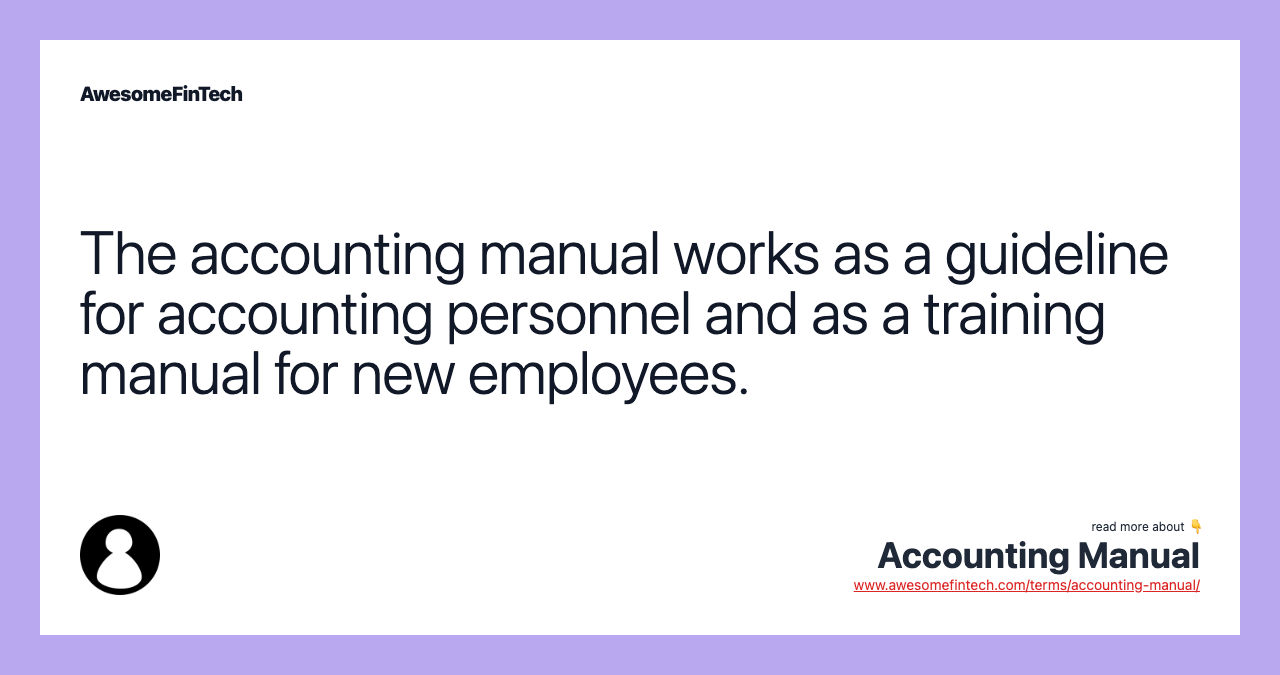Accounting Manual
An accounting manual contains pertinent accounting rules and other information for a business or organization. The process after this might focus on different accounting aspects, such as internal audits, cost accounting, inventory accounting, and cash accounting. An accounting manual usually contains information such as the various departments in the firm, the types of accounting used, special instructions for maintaining ledgers, reporting requirements, and budgetary information. The accounting manual of a firm may list the positions or departments within the organization, a list of accounts, special instructions for maintaining ledgers or records of transactions, or other rules that need to be followed by the accounting staff. The accounting manual was developed internally by the XYZ corporation senior accounting staff and is used as a reference point for established employees and a training tool for new employees.

What Is an Accounting Manual?
An accounting manual contains pertinent accounting rules and other information for a business or organization. It is a manual that is internally developed and contains information specific to the organization for which it was developed.




Understanding an Accounting Manual
An accounting manual contains an outline of all of the pertinent accounting rules, procedures, and guidelines for an organization. It is developed internally by the organization and can be used as a reference tool, to cross-train associates, or to train newly hired personnel. Accounting manuals differ in size and content from one organization to another depending on the type and size of the organization.
The accounting manual of a firm may list the positions or departments within the organization, a list of accounts, special instructions for maintaining ledgers or records of transactions, or other rules that need to be followed by the accounting staff.
It may often contain budgetary information or samples of forms that need to be completed and maintained on-site for recording purposes or sent externally for reporting purposes. Essentially, an accounting manual is an outline of all the important accounting information and procedures for a business.
Components of an Accounting Manual
An accounting manual usually opens with an introduction, explaining the purpose of the manual, and what those reading it should gain from it, as well as management's responsibility in relation to the accounts of the firm.
The next section usually tackles the different departments of the firm and highlights how they factor into the accounting process. This portion explains the company's structure and the responsibilities of each department.
Thereafter, the accounting procedures and policies are explained and how reporting should be conducted. Following this portion, the accounting manual details the process of planning, reporting requirements, and the authorized personnel who oversee these functions.
The process after this might focus on different accounting aspects, such as internal audits, cost accounting, inventory accounting, and cash accounting. The accounting manual usually ends with various resources to assist in the entire process.
Example of an Accounting Manual
XYZ corporation manufactures and sells widgets. XYZ corporation has an accounting department that keeps track of all of the facts and figures that go along with maintaining a manufacturing facility, warehousing inventory, and managing a selling and distribution operation.
All of the appropriate corporate accounts for these areas of business, including guidelines for maintaining them and the necessary forms to be completed, are all found in XYZ's accounting manual.
The accounting manual was developed internally by the XYZ corporation senior accounting staff and is used as a reference point for established employees and a training tool for new employees.
Related terms:
Accounting
Accounting is the process of recording, summarizing, analyzing, and reporting financial transactions of a business to oversight agencies, regulators, and the IRS. read more
Budget Manual
A budget manual is a set of instructions used by large organizations to prepare budgets. read more
Budget : Corporate & Personal Budgets
A budget is an estimation of revenue and expenses over a specified future period of time and is usually compiled and re-evaluated on a periodic basis. read more
Cash Accounting & Example
Cash accounting is a bookkeeping method where revenues and expenses are recorded when actually received or paid, and not when they were incurred. read more
Cost Accounting
Cost accounting is a form of managerial accounting that aims to capture a company's total cost of production by assessing its variable and fixed costs. read more
General Ledger : Uses & How It Works
A general ledger is the record-keeping system for a company’s financial data, with debit and credit account records validated by a trial balance. read more
Internal Audit
An internal audit checks a company’s internal controls, corporate governance, and accounting processes. read more
Inventory :
Inventory is the term for merchandise or raw materials that a company has on hand. read more
Inventory Accounting
Inventory accounting is the body of accounting that deals with valuing and accounting for changes in inventoried assets. read more
Managerial Accounting
Managerial accounting is the practice of analyzing and communicating financial data to managers, who use the information to make business decisions. read more